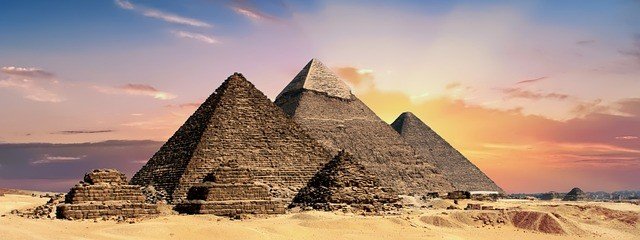The Pyramids of Giza, located on the outskirts of Cairo, Egypt, are one of the world’s most iconic and enigmatic architectural marvels. Here’s a dive into these ancient structures that have fascinated people for thousands of years:
1. Historical Significance
The Pyramids of Giza were built as tombs for pharaohs during the Old Kingdom period of Ancient Egypt, dating back to around 2580-2560 BC. The most famous pyramids at Giza were constructed for Pharaohs Khufu (Great Pyramid), Khafre, and Menkaure.
2. The Great Pyramid of Khufu
The Great Pyramid, built for Pharaoh Khufu, is the largest and oldest pyramid at Giza. It is a massive structure made of limestone blocks and originally stood at a height of 146.6 meters (481 feet). It was the tallest man-made structure in the world for over 3,800 years.
3. Architectural Marvel
The Pyramids of Giza display incredible architectural precision and engineering skills. The stones used in their construction were meticulously cut and fitted together, forming smooth and durable surfaces. The angles of the pyramids’ sides are remarkably close to perfect triangles, reflecting the advanced mathematical and engineering knowledge of the ancient Egyptians.
4. Sphinx
Adjacent to the pyramids stands the Great Sphinx, a colossal statue with the body of a lion and the head of a pharaoh, likely representing Pharaoh Khafre. The Sphinx is a symbol of ancient Egyptian civilization and has captivated visitors for centuries.
5. Pyramid Complexes
Each pyramid at Giza is part of a larger complex that includes mortuary temples, causeways, and smaller satellite pyramids. These complexes were designed to serve as the final resting places for the pharaohs and as sites for religious rituals and offerings.
6. Pyramid Mysteries
The Pyramids of Giza have sparked numerous theories and mysteries. The precise methods used to construct these massive structures, the alignment with astronomical phenomena, and the purpose of hidden chambers continue to intrigue researchers and enthusiasts. Many believe that there are still undiscovered secrets within the pyramids.

7. UNESCO World Heritage Site
The Pyramids of Giza, along with the Sphinx and the surrounding archaeological sites, have been designated as a UNESCO World Heritage Site since 1979. They are recognized for their outstanding cultural value and significance to humanity.
8. Tourism and Visitor Experience
The Pyramids of Giza attract millions of tourists from around the world each year. Visitors can explore the pyramid complexes, enter some of the inner chambers, and enjoy panoramic views of the site. Camel rides in the desert around the pyramids are a popular activity, offering a unique perspective on these ancient wonders.
9. Preservation and Conservation
The Egyptian government and international organizations are committed to preserving and protecting the Pyramids of Giza. Efforts are made to maintain the structures, prevent erosion, and ensure sustainable tourism practices to safeguard these historical treasures for future generations.
The Pyramids of Giza stand as a testament to the ingenuity and architectural prowess of the ancient Egyptians. They continue to captivate us with their grandeur, mysteries, and timeless allure, providing a glimpse into the fascinating civilization that once thrived along the Nile River.









